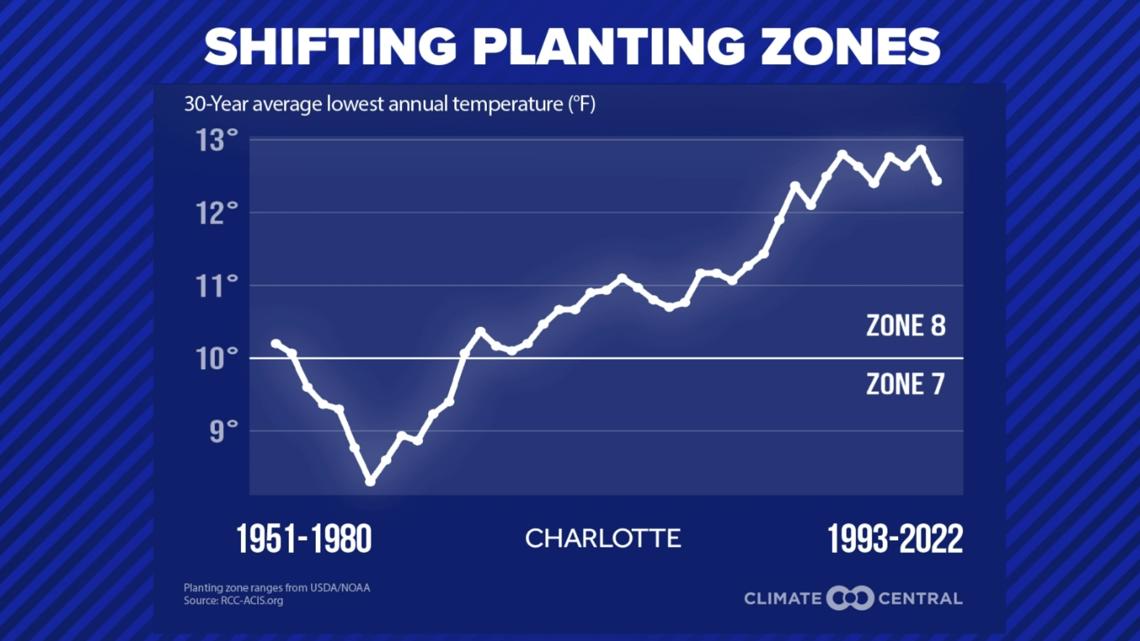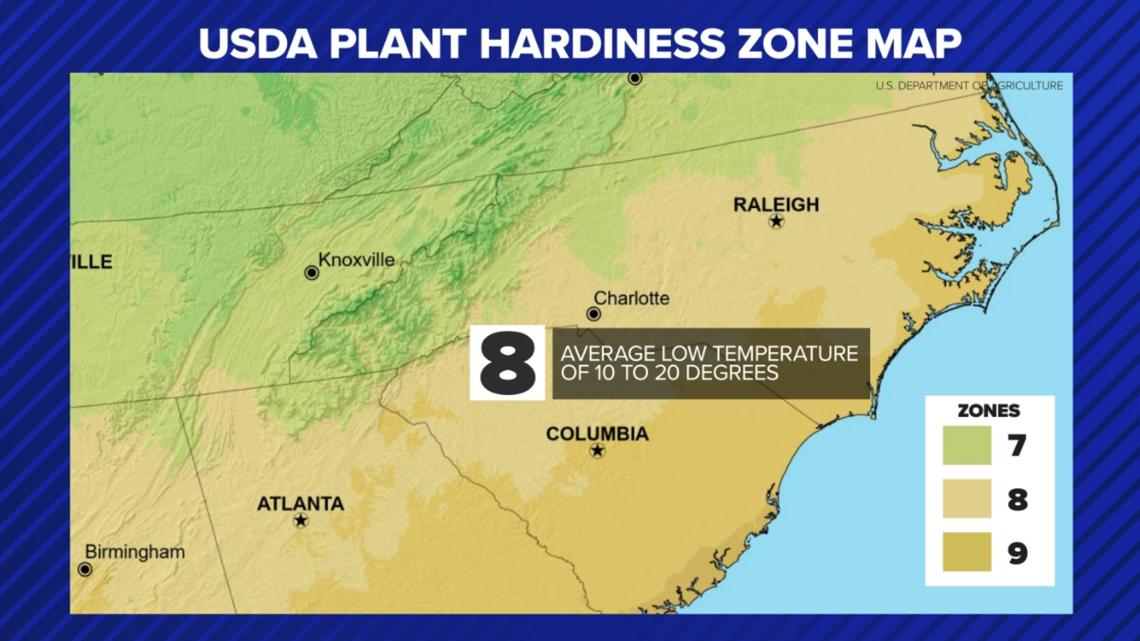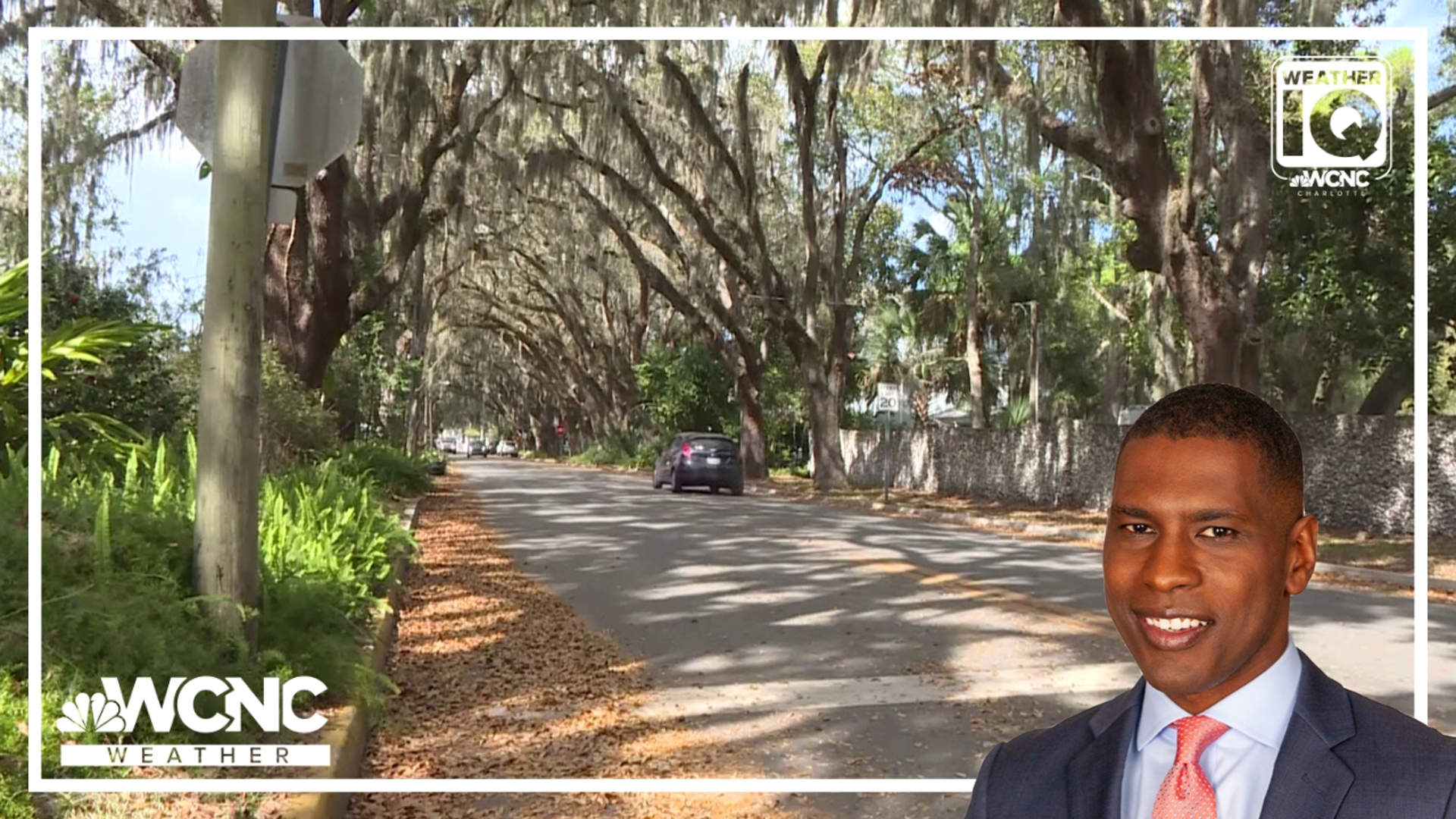CHARLOTTE, N.C. — Spanish moss is a typical plant of South Carolina's low country but a changing climate could mean the plant can now thrive elsewhere in the Carolinas.
Spanish moss is light and airy as it drapes from live oak trees. The epiphytic plant thrives in moderate-to-high humidity levels of around 50-to-70%. It currently mostly resides in places like Charleston and Savannah.
Spanish moss does not require soil to grow, according to Jeff Gillman, the botanical garden director at UNC Charlotte.
"It gets its nutrients from insects going to the bathroom on it," he said. "Basically where it gets all its nutrients, and it doesn’t have real roots and it lives up in the tree."


Gillman said because of climate change plant enthusiasts in Charlotte can now consider a wider range of plant species like Spanish moss. However, he cautioned, it still may not quite be moist enough to sustain its potential growth.
"The key for us in growing Spanish moss is humidity," Gillman said. "A lot of people will try it, and the temperature for Spanish moss here in Charlotte is fine. It’s the question of having the right humidity to grow it.”


The USDA has updated its plant hardiness zone map to reflect the impact of climate change.
For instance, Zone 8 plants with an average low temperature of 10-to-20 degrees can now grow in North Carolina.
"It’s happening because the minimum low temperature that we see in different regions is rising and because it’s rising, we are seeing different plants move in," Gillman explained. "Plants that used to be considered sub-tropical are slowly moving northward because they’re able to better survive the winter.”
Spanish moss is not a parasite and it doesn’t harm trees.
When conditions are dry, a couple of suggestions from Gilmman include misting the plant regularly or using a humidifier to help create the necessary moisture levels for Spanish moss to flourish.
Contact KJ Jacobs at kjacobs3@wcnc.com and follow him on Facebook, X and Instagram.
WCNC Charlotte’s Weather IQ YouTube channel gives detailed explainers from the WCNC Charlotte weather meteorologists to help you learn and understand weather, climate and science. Watch previous stories where you can raise your Weather IQ in the YouTube playlist below and subscribe to get updated when new videos are uploaded.

